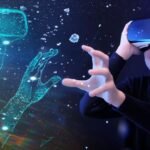AI in Retail Personalization: Customizing shopping experiences with AI-driven recommendations.
In the digital age, the retail landscape is undergoing a profound shift towards personalized shopping experiences, thanks to the integration of artificial intelligence (AI) technologies. From suggesting products tailored to individual preferences to creating seamless omnichannel interactions, AI-driven retail personalization is reshaping the way consumers engage with brands. In this article, we delve into the exciting world of AI in retail personalization, exploring how these innovative technologies are revolutionizing the shopping journey and driving customer loyalty.
I. The Power of Personalization in Retail
Personalization has become a cornerstone of modern consumer expectations. Shoppers seek curated experiences that align with their tastes, needs, and aspirations. Retailers that effectively harness AI-driven personalization can create deeper connections with their customers, enhance brand loyalty, and boost sales.
II. AI Applications in Retail Personalization
- Recommendation Systems AI-powered recommendation engines analyze vast amounts of data, including purchase history, browsing behavior, and demographic information. These systems then provide shoppers with personalized product recommendations that increase the likelihood of making a purchase.
- Customer Segmentation AI algorithms segment customers into distinct groups based on their preferences, behaviors, and demographics. This enables retailers to tailor marketing campaigns, promotions, and content to specific audience segments.
- Dynamic Pricing AI-driven dynamic pricing adjusts product prices in real-time based on factors such as demand, competition, and historical data. This ensures that prices remain competitive and appealing to individual shoppers.
- Visual Search and Augmented Reality (AR) AI-powered visual search and AR technologies allow shoppers to find products by using images or their smartphone camera. This enhances the shopping experience and enables consumers to see how products would look in real-life settings.
- Chatbots and Virtual Assistants AI-driven chatbots and virtual assistants provide personalized customer support and recommendations. They answer queries, guide shoppers through their journey, and offer assistance at any time of day.
III. Real-Life Impact of AI-Powered Retail Personalization
- Amazon’s Product Recommendations Amazon’s recommendation engine is a prime example of AI-driven personalization. By analyzing user behavior, purchase history, and browsing patterns, Amazon suggests products that align with individual preferences, contributing to a significant portion of the company’s sales.
- Starbucks’ Personalized Offers Starbucks leverages AI to create personalized offers and recommendations through its mobile app. The app tracks customer preferences and usage patterns to provide tailored promotions and rewards, fostering customer loyalty.
- Nike’s Customized Shopping Experience Nike uses AI-powered platforms to offer personalized product recommendations and interactive shopping experiences. Shoppers can customize shoe designs, receive fitness advice, and explore curated collections that resonate with their interests.
IV. The Future of AI-Driven Retail Personalization
As AI technologies continue to evolve, the future of retail personalization holds even more exciting possibilities. Retailers may incorporate biometric data, such as facial recognition, to further tailor experiences, and leverage AI to optimize inventory management and supply chain processes.
V. Embracing the Personalized Future
While the potential of AI in retail personalization is vast, retailers must navigate challenges related to data privacy, transparency, and maintaining the human touch. A delicate balance between leveraging AI’s capabilities and fostering genuine customer relationships is essential for success.


































